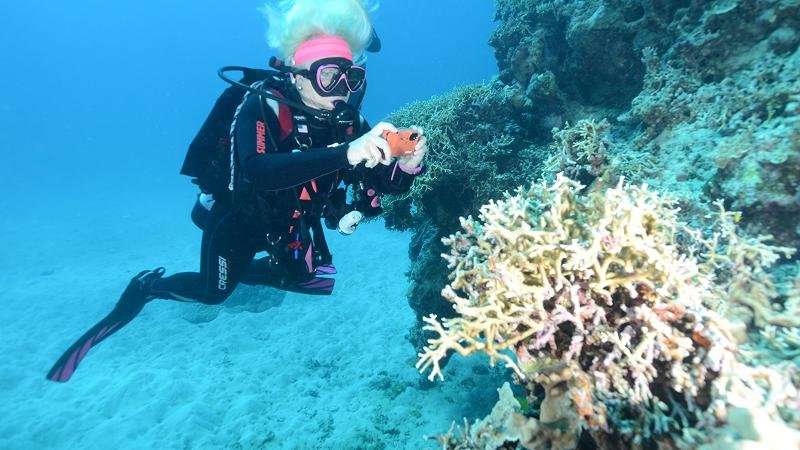Credit: Queensland University of Technology
Log on to your laptop. Start swotting up on sea life. Millions of everyday Australians are being encouraged to take a 'dry dive' on the Great Barrier Reef, as part of a first-of-its-kind, citizen science project.
Launched to celebrate the International Year of the Reef, and National Science Week (11-19 August), QUT's Virtual Reef Diver project will allow people to work alongside marine scientists, from the comfort of their home computer, to classify underwater images of the reef, for the very first time.
QUT Project Leader Dr. Erin Peterson said the information would help scientists to better understand where in the reef hard coral is increasing, or decreasing.
"The reef is an amazing and beautiful place to visit and we want to help ensure that it remains one of the world's great natural wonders," said Dr. Peterson.
"Professional monitoring data is extremely valuable because it helps us understand how coral reefs are changing over time– but the sheer size of the reef means that it is impossible for any one organisation to complete the task alone.
"The motivation for the Virtual Reef Diver project was to look for innovative ways to obtain new data in a cost-effective manner and one way is to tap into the power of citizen scientists. We see this as a wonderful opportunity to involve the community, no matter where they live – and for those citizen scientists to add real value to our monitoring and mapping.
Credit: Queensland University of Technology
"The results of this project will help to give marine scientists and reef managers the information they need to make critical decisions about the reef's future. It will also lay the groundwork for creating an up-to-date and comprehensive map of the Great Barrier Reef's coral cover," she said.
To classify a reef image, volunteers identify and categorise what they see underneath 15 randomly placed circles on an underwater image of the reef, such as coral, water, sand or algae—but citizen scientists will have their work cut out for them, with hundreds of thousands of images available for classification over the next 12 months.
"The good news is that people who want to participate can do as much or as little as they would like. There is no minimum number of images to classify," said Dr. Peterson.
"Behind the scenes, we also want to investigate how classification decisions from citizen scientists compare to those produced by artificial intelligence. Are scientists at home going to get the best results? We're going to find out."
Unlike other citizen science projects, Virtual Reef Diver uses a web-based platform that combines state-of-the-art software and statistical modelling to integrate citizen-contributed data with data collected by professional monitoring programs, research institutes and private organisations, to produce more accurate reef health maps.
More information: The website is now live at virtualreef.org.au
Provided by Queensland University of Technology
























